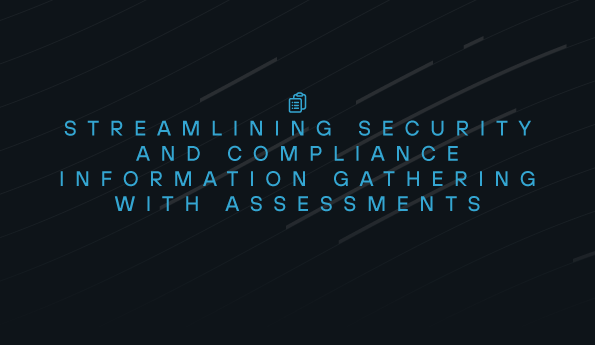The Importance of SSL Inspection
Encrypted traffic is a cornerstone of the internet: over 90% of internet traffic is SSL-encrypted. Although essential for privacy, SSL encryption also creates significant blind spots for traditional security measures.
SSL inspection offers a way for businesses to take command over their network security through increased visibility and control across SSL encrypted sources. But, without the right expertise and tooling, SSL inspection presents its own issues. Let’s examine these unique challenges and opportunities in detail.
The Challenge of SSL Encryption
SSL encryption is a double-edged sword. On one side, it protects sensitive data from prying eyes, ensuring secure communication. On the other side, it shields malicious activities from traditional security tools that lack the capability to decrypt and inspect traffic.
According to a recent report found that over 87% of cyberattacks in 2024 exploited SSL encryption to evade detection. Without SSL inspection, threats like phishing links and malware can waltz past perimeter defenses undetected, jeopardizing you and your clients' businesses.
Why SSL Inspection is No Longer Optional
As cyber threats grow more sophisticated, the risks of ignoring SSL inspection are too great to ignore. Visibility into encrypted traffic is not just a “nice-to-have” feature; it’s a critical necessity for detecting and preventing advanced threats.
SSL inspection empowers organizations to improve their visibility over encrypted traffic, enabling a robust defense against hidden dangers. Critical security features like anti-virus scanning, malware detection, advanced threat prevention, and URL filtering become exponentially more effective when they can inspect the actual content of encrypted data. This isn’t just about keeping threats out; it’s about implementing ongoing, effective cybersecurity measures.
Despite its importance, SSL inspection adoption remains surprisingly low. Many organizations shy away due to concerns about complexity, performance impacts, and the effort required to manage exceptions.
Addressing the Common Barriers to Adoption
One of the most significant hurdles is the perceived complexity of implementing SSL inspection. Without the proper tooling, expertise, and expectation handling capabilities, SSL inspection can lead to poor user experience, making it seem not worth the effort.
SSL inspection also raises concerns about performance degradation. Hardware limitations of firewall-based SSL inspection affect bandwidth and create latency downstream. These effects can, however, be mitigated with proper planning and the right tools. Modern, cloud-based implementations are designed to minimize latency and optimize resource use.
Ultimately, the biggest detractor against SSL inspection adoption is miseducation. Many organizations simply don’t recognize the usefulness of SSL inspection compared to potential difficulties that may arise in its implementation.
Positioning SSL Inspection as a Competitive Advantage for MSPs
For managed service providers (MSPs), the reluctance to adopt SSL inspection represents an opportunity to differentiate and educate. MSPs can present their expertise as a catalyst to simplifying SSL inspection. By handling setup, performance tuning, and exception management, you not only deliver enhanced security but also eliminate headaches for your clients. It’s important to educate your clients on SSL inspection and how it demonstrates alignment to their operational needs without sacrificing efficiency.
MSPs who take the lead on SSL inspection can position themselves as forward-thinking partners and trusted advisors, ready to tackle the challenges of encrypted threats head-on. When paired with clear communication, ongoing education, and seamless management, SSL inspection becomes not just a service but a powerful differentiator in the crowded MSP market.
By investing in SSL inspection, you’re not just protecting your clients—you’re future-proofing your business and solidifying your reputation as a cybersecurity leader.
Simplifying SSL Inspection Implementation with SASE
Of course, the traditional drawbacks of SSL inspection can affect MSPs without a modern implementation. Secure Access Service Edge (SASE) offers a transformative solution for overcoming the common barriers to SSL inspection by leveraging a cloud-based approach. By integrating network and security functions into a single, unified platform, SASE eliminates much of the complexity associated with traditional SSL inspection setups.
Performance concerns are addressed through the distributed nature of SASE’s cloud architecture, which ensures that inspection processes occur close to the user or endpoint, reducing latency and enhancing efficiency. This architecture not only minimizes the impact on network performance but also scales effortlessly to accommodate growing traffic demands.
SASE also simplifies management by automating many of the processes involved in SSL inspection, such as certificate handling and exception policies. This reduces the operational burden on MSPs, enabling them to deliver top-tier security without adding administrative overhead. Additionally, SASE’s centralized management console provides a single pane of glass for monitoring and adjusting inspection policies, further streamlining operations.
Implement SSL Inspection through SASE Today
By adopting SASE, MSPs can turn SSL inspection from a perceived obstacle into a seamless, value-driven service. A cloud-first approach through SASE allows you to offer your clients not only superior visibility into encrypted traffic but also the assurance that their security strategy is built on cutting-edge, future-ready technology.
Confidently address today’s threats while staying prepared for tomorrow’s challenges. Reach out to us to learn more about how you can simplify your security approach with SASE.
See Todyl in Action
Learn how you can protect what you built.
Stay on the Cutting Edge of Security
Subscribe to our newsletter to get our latest insights.



